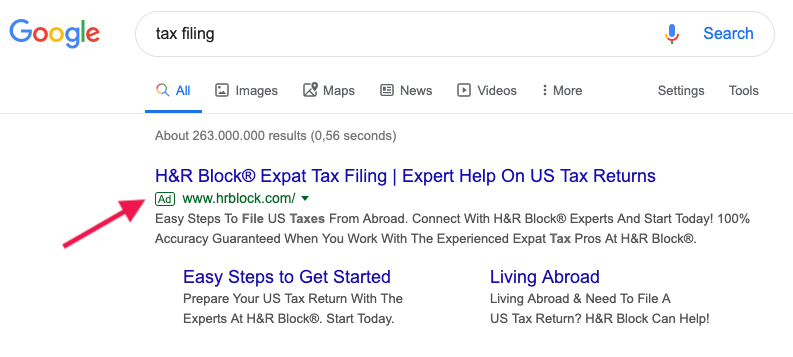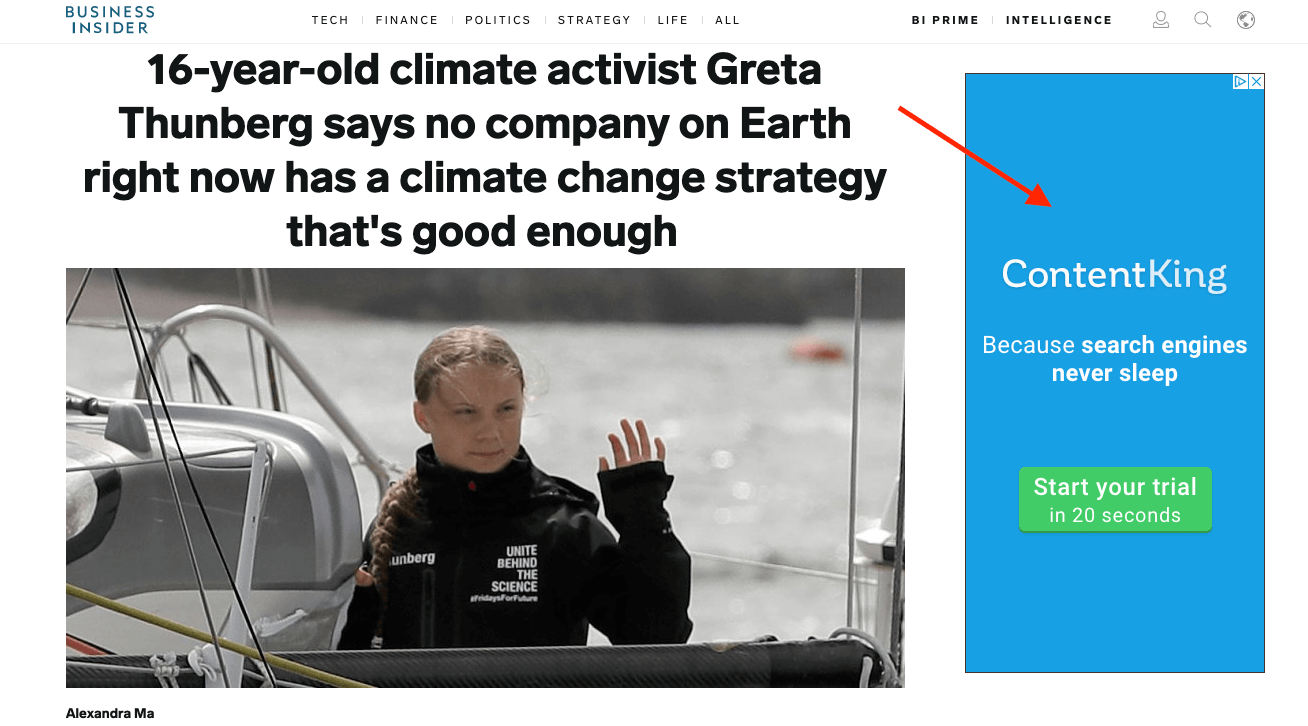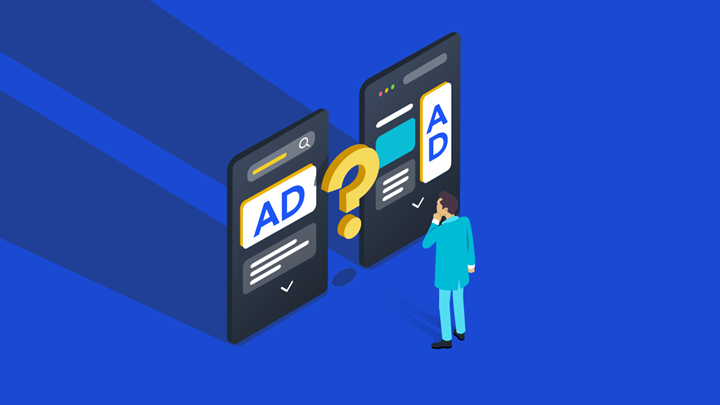Learn when to use search ads vs. display ads
- By Kyra Kuik - Aug 20, 2019 Ads
While organic optimization is still incredibly important to generating new business, now more than ever, paid advertising is key for businesses wanting to create more interest and sales. In 2019, digital ad spend will grow by 17.6% to over $333 billion. Of that $333 billion, Google Ads accounts for almost a third ($103 billion).
It’s clear that businesses are investing heavily in digital spend, specifically with Google Ads, which makes it all the more important to nail the ad format you choose. Google has two major ad options: search and display. Here, we’ll go through the differences between the two formats, the benefits of each, and when you should use what.
What’s the difference between search and display ads?
Search ads: what are they?
Paid search advertising is when companies pay to have their ads displayed alongside search results when users search for certain keywords. The ads are triggered by specific keywords the user searches for. For example, when searching for “tax filing” outside the US, the first search ad is H&R Block expat tax filing services, which is very targeted to the keywords, location, and intent of the search.

Search ads: what are the benefits?
- Precision: With search ads, you can use different keyword match types to trigger your ad. You can also use negative keywords, so your ad isn’t triggered when users search for those keywords.
- Map ads to intent: Because you can bid on specific keywords, you can map your ads to a user’s intent. Search intent is the why behind each search. Is a user looking for information? To buy? To learn something? When you create an ad to address a user’s intent, you drastically increase your chance of achieving your ad goals.
- Budget-friendly: Search ads are better if you’re on a budget, because conversion rates are much higher (3.75% for search ads and .77% for display ads)—which makes sense, as you’re able to tailor your ad to search intent.
- Lead gen: Search ads have a much higher click through rate (CTR) and higher conversion rates than display ads. Because you’re able to target prospects who are in the consideration or purchase phase of the funnel, your chances of generating leads or purchases are much higher with search ads.
- Situation-specific services: If you provide “urgent” services (think locksmith, plumber, or selling tickets to an upcoming event, etc.) where you need to target users immediately, then search ads will be a better fit, as you can target your audience in real-time.
Display ads: what are they?
When you advertise on the Google Display Network, you’re essentially renting ad space that Google has all over internet. Google claims its display network has over 2 million sites and reaches over 90% of people on the internet. Your ads will be triggered if your audience targeting matches a specific user’s interests, demographics, or search history.

Display ads: what are the benefits?
- Build brand awareness: One of the key benefits of search ads is the ability to get really specific with your keyword targeting. The benefit of display ads is almost the opposite: you can reach a much wider audience to build brand awareness with. The display network has a massive reach, so you get in front of a new, but still relevant audience.
- Stay top of mind: With the display network, you can start to target your audience with your products/services before they get to the consideration stage. This is especially useful if you offer seasonal products, services, or discounts.
- Expand your customer base: You can use affinity audiences or customer match to target your customers or people similar to your customers who have similar interests. In this way, you can re-engage customers or find new ones and build brand awareness.
- Volume on a budget: Conversions rates are much lower for display ads (about 0.9%), but the average cost per click is much lower than search ads ($0.58 for display and $2.32 for search). So, it’s possible to get a decent volume of clicks for cheap but be aware that the chances of converting are low, which is why display campaigns are better for brand awareness.
When should you use display ads vs search ads?
Ideally, you should use both display and search ads in your paid strategy, but we’ll get to more of that later. If you have a limited budget or very specific goals, use the criteria below to guide you.
Keep in mind that search advertising functions as a “pull” and display advertising is a “push” – meaning that you capture search intent and pull a user in based on their search terms, while you push your message out via display, regardless of what a user is doing.
When to use display ads:
- If you have low brand awareness: Display ads are great for getting you brand visually in front of a wide audience. Use video or image ads to create a strong first impression with a relevant audience.
- For remarketing: Show your ads to people who already interacted with your brand and are more likely to buy from you. You can, for example, advertise a gated eBook to people who already read one of your blog posts, or show ads to people who added items to their shopping cart but didn’t purchase.
- If you have a visual message: Since display ads are highly visual, they work particularly well with consumer products and other visual assets like video, eBooks, infographics, coupons, etc.
- For an audience with a niche interest: You can use affinity or interest targeting for display ads that gets your brand in front of a very specific audience. This is great for products/services that relevant for a more niche audience.
When to use search ads:
- For higher quality leads: Because search ads can be better mapped to buyer intent, they’re perfect for targeting consumers who have already shown intent to buy. Meaning, with search ads, you can target active searchers and buyers.
- If you need to supplement organic traffic: If your rankings are well below your competitors or you aren’t on page one of Google for your most important keywords, then search ads are the way to go, because you can get better visibility for the search terms that matter. This is a great short-term strategy while you build your organic presence.
- If you’re on a budget: While CPC is higher for search ads, the conversation rates are also higher. It’s easier to prove ROI with search ads, which makes them a better fit for smaller, more targeted budgets.
- If you sell a service: People generally search for services they’re interested in, so it’s difficult to build awareness for services via display (If you provide seasonal services, display can be a good choice-- think snow tires: you can build awareness in the fall for people looking to change their tires out).
Ideally, use search and display together
You can drive a lot of value using both display and search campaigns together. Build brand awareness and grow your audience with display, while targeting mid to lower funnel search intent with search ads.
However, it’s key to break your display and search ads into separate campaigns. Doing this allows you to accomplish the following:
- Create different messaging (and visuals) for each network
- Control your budget for each network individually
- Test and optimize your message for each network
